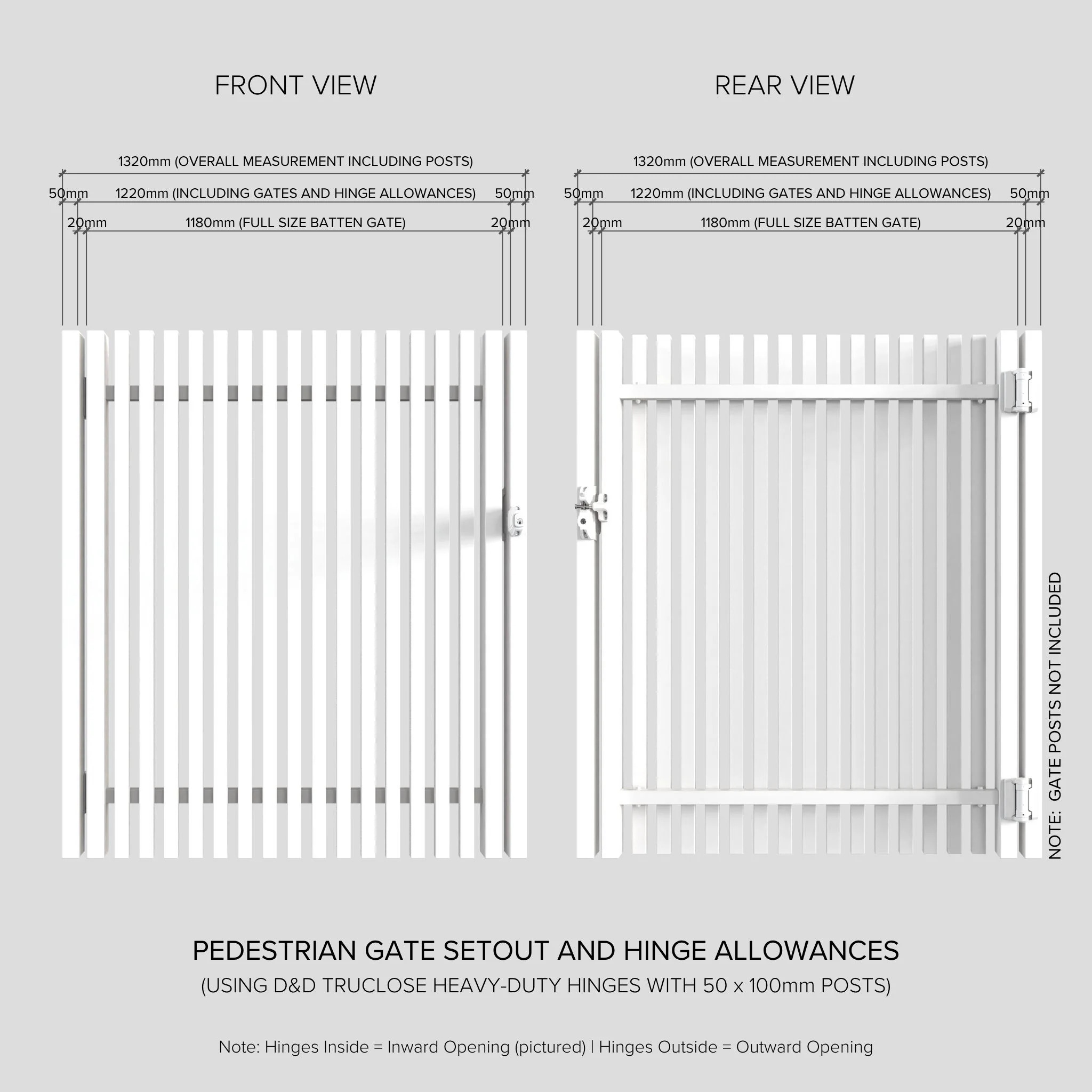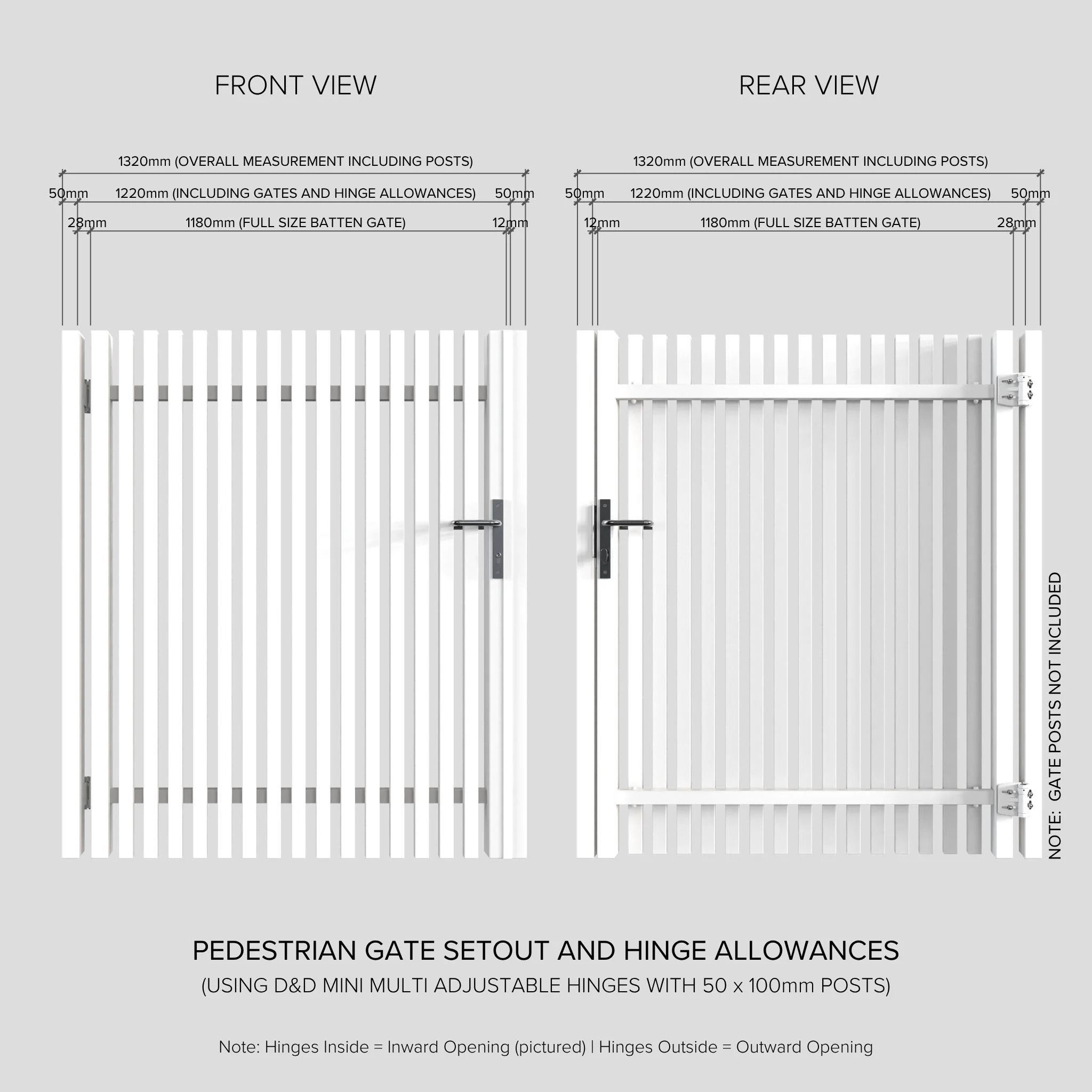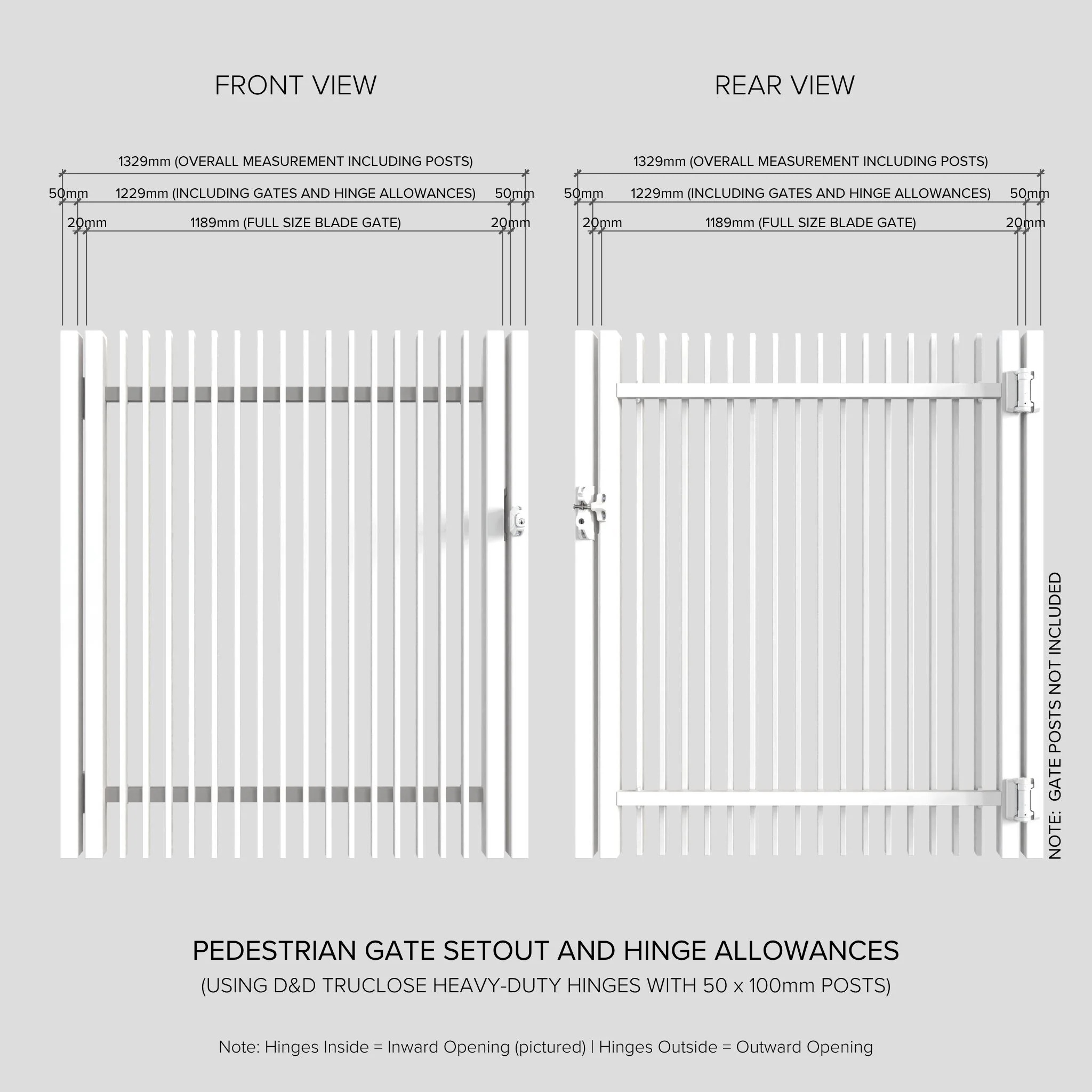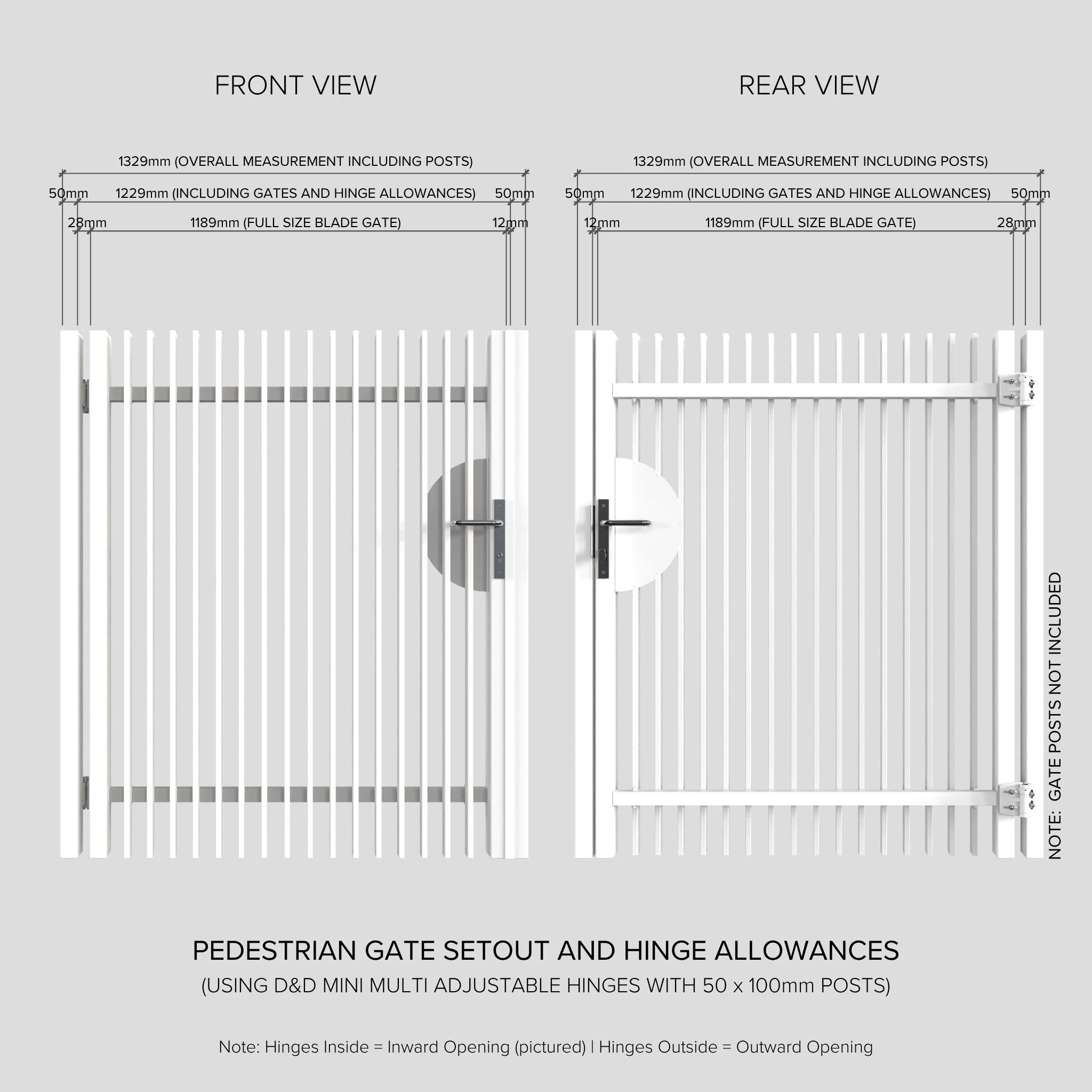Pedestrian Gate Setout
When planning for pedestrian gates, it's important to accurately determine the space needed between posts to ensure smooth operation and proper alignment with your chosen hardware.
This guide will help you understand the spacing requirements based on different hardware setups, ensuring your gate functions perfectly for years to come.
Factors to consider:
Gate Width: The width of the pedestrian gate itself is the primary factor. For the purpose of this article, we will be using the max width of Future Fence adjustable width Pedestrian Gates.
Hinge Type: Different hinges require different amounts of space. In this article, we will consider two types of hinges. The D&D TruClose Heavy Duty Hinges (recommended for gates paired with D&D LokkLatch and Magnalatch) and the D&D Mini Multi Adjust hinges (recommended for gates with a handle and mortice lock setup).
Posts: Posts will be required on either side of the gate in most scenarios, unless you are planning on hinging the gate directly off the wall. For a balanced and consistent look, we recommend a post on either side to hinge off/latch to.
Please refer to the diagram below for ideal gate setouts with your chosen hardware.




